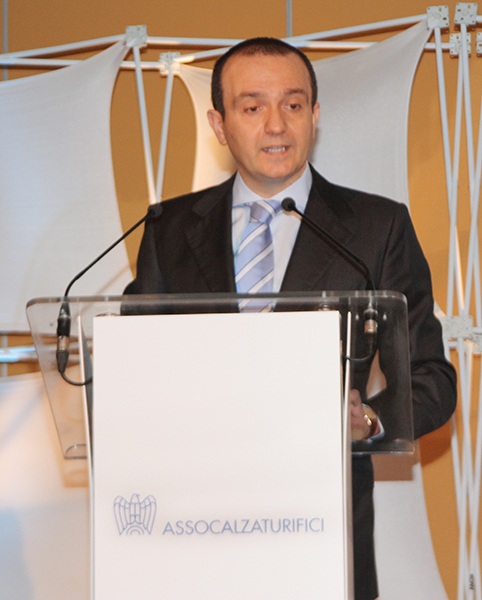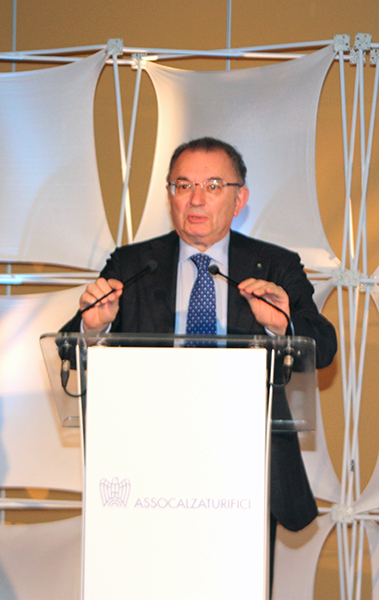Confindustria president, Giorgio Squinzi, thus appealed at the assembly of ASSOCALZATURIFICI on 4 June last. Meanwhile the sector is seeing a further downturn on the domestic market, compensated by an increase of 5.3% in export

A moment to reflect on the past but also and above all a declaration of commitment to the future was the message of president Cleto Sagripanti at the assembly of Assocalzaturifici (formerly ANCI) held on 4 June last in Milan
In such a complex scenario – said the Marchigiano entrepreneur – we ourselves have decided to stake on a “2.0” association able to keep our roots in the past but also project into the future, investing in various directions. Today our association is fighting various battles, including that against counterfeiting, the obligatory labelling of origins and supporting internationalization of footwear firms
Among the most recent successful actions of the association Sagripanti highlighted the debut of TheMICAM Shanghai – a turning point in the international direction of the fair – but also the set up of the “Polo Tecnologico Calzaturiero” in Vigevano of international standing, the digital platform “I Love Italian Shoes” and the new Study Centre of the association, which has recently established a new statute and changed name.
As regards policies and the persistent difficulties of the domestic market, the president of Assocalzaturifici reemphasized the suggestions long proposed by Confindustria that include reducing excessive fiscal pressure, the need to give the system a financial boost and update public administration. Issues that were proposed by the president of Confindustria Giorgio Squinzi himself, who in his popular speech stressed the urgent need to fight the risk of denationalizing the industry of our country.
We must start from industry and our ability to put the country in condition to grow, getting its GDP back from 17% to 20% of the total
stressed Squinzi.

To stop the downturn investment in a series of industrial policies is required, innovation and training young people, rather than trade incentives. More attention should be given to youngsters and the message launched also by Franca Sozzani, director of Vogue Italia, who called upon footwear entrepreneurs to open their doors to young creators because research and creativity are the real engine of Made in Italy.
In fact Made in Italy, or rather the law on labelling, still blocked in Brussels by opposition from some North European countries of the European Parliament. She advised footwear associations and Confindustria to exercise the necessary pressure so that voting can take place next December rather than, as seems planned, in March 2014 because in that case the issue of “Made in…” would become a marketing instrument in view of the European elections of May.
As to the economic situation, after a difficult 2012, the first months of 2013 also confirm the trends in the sector of the previous year: a decided drop in domestic consumption (-7,2%) with a consequent decline in import (-2.9%) along with an increase in export (+5.3%) led by non EU markets.




